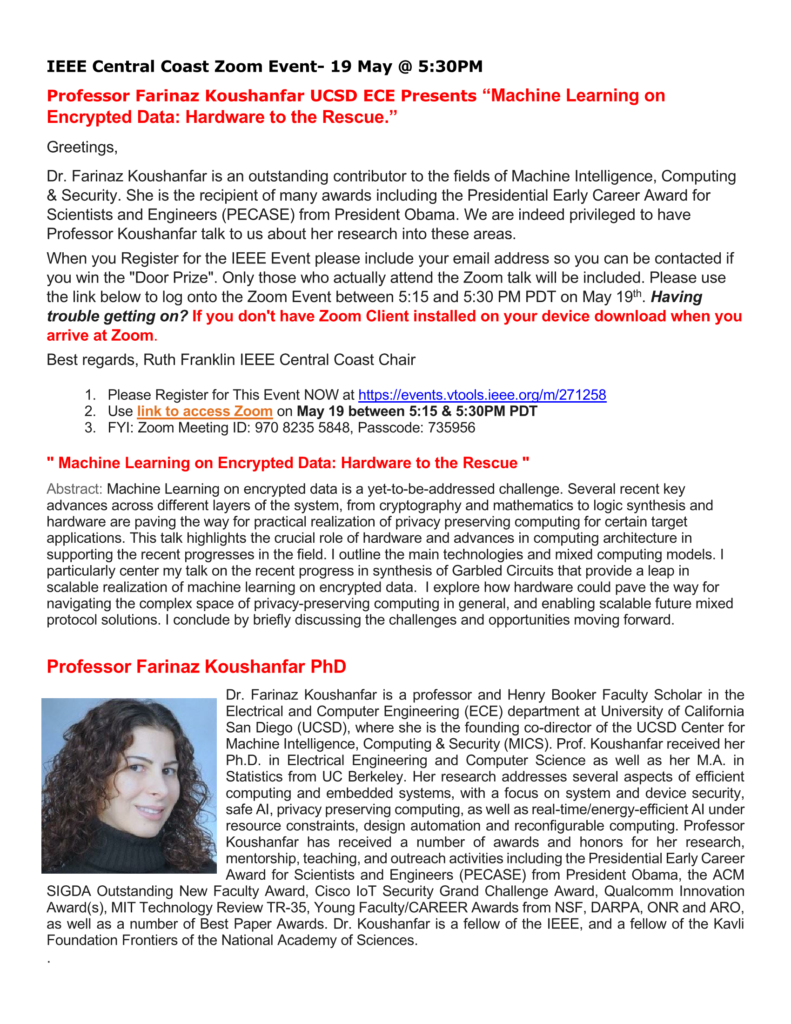VIRTUAL: Machine Learning on Encrypted Data: Hardware to the Rescue – 19 May @ 5:30PM
Professor Farinaz Koushanfar UCSD ECE Presents “Machine Learning on Encrypted Data: Hardware to the Rescue.”
Dr. Farinaz Koushanfar is an outstanding contributor to the fields of Machine Intelligence, Computing & Security. She is the recipient of many awards including the Presidential Early Career Award for Scientists and Engineers (PECASE) from President Obama. We are indeed privileged to have Professor Koushanfar talk to us about her research into these areas.
When you Register for the IEEE Event please include your email address so you can be contacted if you win the “Door Prize”. Only those who actually attend the Zoom talk will be included. Please use the link below to log onto the Zoom Event between 5:15 and 5:30 PM PDT on May 19th. Having trouble getting on? If you don’t have Zoom Client installed on your device download when you arrive at Zoom.
- Please Register for This Event NOW at https://events.vtools.ieee.org/m/271258
- Use link to access Zoom on May 19 between 5:15 & 5:30PM PDT
- FYI: Zoom Meeting ID: 970 8235 5848, Passcode: 735956
“Machine Learning on Encrypted Data: Hardware to the Rescue “
Abstract: Machine Learning on encrypted data is a yet-to-be-addressed challenge. Several recent key advances across different layers of the system, from cryptography and mathematics to logic synthesis and hardware are paving the way for practical realization of privacy preserving computing for certain target applications. This talk highlights the crucial role of hardware and advances in computing architecture in supporting the recent progresses in the field. I outline the main technologies and mixed computing models. I particularly center my talk on the recent progress in synthesis of Garbled Circuits that provide a leap in scalable realization of machine learning on encrypted data. I explore how hardware could pave the way for navigating the complex space of privacy-preserving computing in general, and enabling scalable future mixed protocol solutions. I conclude by briefly discussing the challenges and opportunities moving forward.


